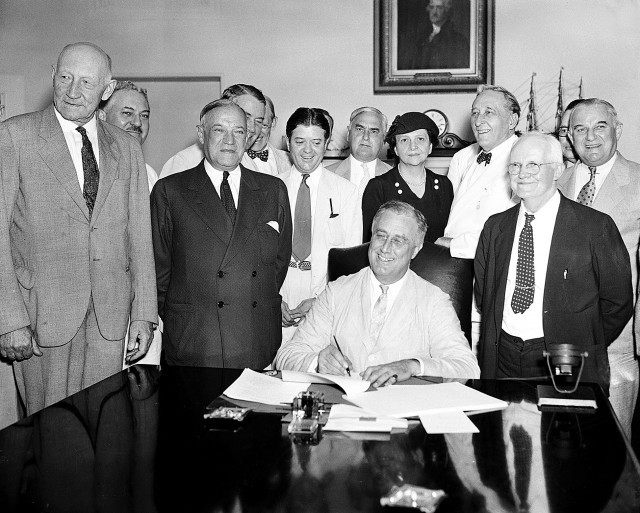According to new data compiled by researchers from Harvard and Dartmouth universities, the Social Security Administration’s actuarial projections over the last 15 years have been overly optimistic about the health of the program’s trust funds and missed the mark by over $1 trillion.
“These biases are getting bigger and they are substantial. (Social Security) is going to be insolvent before everyone thinks,” said Gary King, co-author of the reports and director of Harvard’s Institute for Quantitative Social Science. He added that the SSA’s forecasts have been “systematically biased and overconfident.”
According to the report, the SSA’s actuarial projections in the 1980s underestimated revenues and overestimated costs by $27 billion; in the 1990s, that figure was $200 billion.
Now, in the first ten years after 2000, the forecasts overestimated revenue and underestimated costs to the total of $1 trillion.
The Social Security and Medicare Trustees’ 2014 report projected that its trust funds would be non-existent by 2033 unless the trajectory of the program was changed, but King and Dartmouth professor Samir Soneji, his co-author in the new report, had posited in 2012 that the trust funds would be gone by 2031, as the SSA had underestimated how long Americans would live.
In 2013, Stephen Goss, the chief actuary since 2001, joined other SSA officials to respond to the 2102 report filed by King and Soneji by asserting, “The projections developed by the Office of the Chief Actuary for the Trustees Reports are intended to reflect all aspects of future possible trends in demographic, economic, and programmatic factors, given current Social Security law.” King and Soneji’s estimates “were within the range of reasonable uncertainty as specified in the Trustees Report, and therefore should cause no alarm.”
In the current report, the Harvard and Dartmouth team analyzed the SSA’s annual forecasts between 1978 and 2013, finding that although the forecasts 1978 to 2000 seemed unbiased, that trend changed in 2000. The report stated, “After 2000, forecast errors became increasingly biased, and in the same direction. Trustees Reports after 2000 all overestimated the assets in the program and overestimated solvency of the Trust Funds.”
Noting the biases reflected since 2000, King asserted that the SSA should imitate other U.S. government agencies, such as the Congressional Budget Office, the Census Bureau and the Bureau of Labor Statistics, and offer self-evaluations of their forecasts.
“Actuaries worked really hard at being unbiased,” he said. “We find no evidence that they bend to political pressure,” but added that the actuaries have ignored the longer lives of Americans.
Laurence Kotlikoff, a Boston University professor of economics, suggests that the SSA stop estimating its unfunded obligations for only the next 75 years and instead use the “infinite horizon.” That would alter SSA’s projected unfunded liabilities from the $10.6 trillion estimated by 2088 to $24.9 trillion. Kotlikoff charged, “We have a situation that is like Enron accounting. And the public doesn’t want to hear about it.”

COMMENTS
Please let us know if you're having issues with commenting.